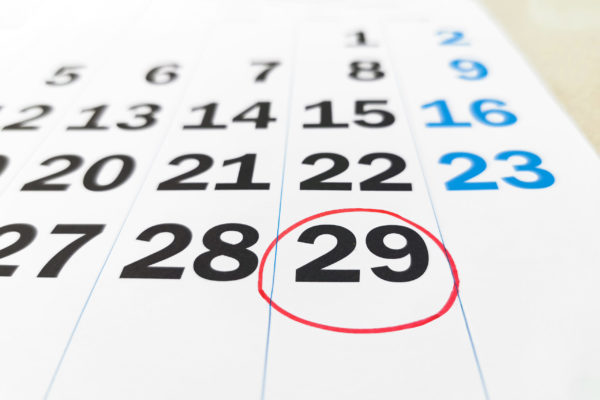It’s finally time to wish your favorite leapling a happy birthday. Saturday, February 29, 2020 is a Leap Day, that one extra day we add to the calendar approximately every four years. You might be wondering, ‘Why do we need Leap Day? What’s the history behind this peculiarity on the calendar?’
Two UT Austin experts are here to explain.
So, why do we have Leap Day?
It all comes down to the fact that a year really isn’t 365 days long. In reality, the amount of time it takes the earth to revolve around the sun is closer to 365.242199 days.
So, calendars all over the world add an extra day almost every four years to keep our calendar and the seasons aligned. Without them, winter could end up in June, or it could be 95 degrees during winter break.
But, there’s a catch. By adding one extra day to every fourth year, we get an average of 365.25 days per year. That’s close, but not exactly the actual number of days in a year (365.242199). So how did we correct even further? The answer to that lies in the ancient history of Leap Year.
What is the history of Leap Year?
According to Tom Palaima, a classics professor at the University of Texas at Austin, the practice of adding periods of time to a year so it reflects variations in lunar and solar cycles dates back to ancient civilizations.
The Athenian calendar, which was used in the 6th, 5th and 4th centuries B.C., had twelve lunar months. However, a calendar with twelve observable lunar months doesn’t coincide with one solar year and its seasons, which made it difficult to perform seasonal religious rites. This led to inserting or ‘intercalating’ an extra month periodically to realign lunar and solar years. As measurements became more precise through time, months added became days added to make things almost precise, Palaima said.
However, Leap Years in the way we know them today didn’t come about till much later — 45 B.C. during the time of the Roman Empire under Julius Caesar to be exact.
“In order to counteract political manipulation of corrective days, thus extending or shortening time in office of political favorites or rivals, Julius Caesar devised what we call the Julian calendar that added days to the ends of months to keep lunar and solar years from becoming too misaligned,” Palaima said. “A leap day was to occur every fourth year on February 24.”
Now, this system would work if a solar year were exactly 365.25 days, but 365.242199 is slightly less than that, and over time that small difference adds up.
By 1582, that discrepancy added up to about 10 days. So, to further correct our calendar, Pope Gregory XIII created the Gregorian calendar and established Feb. 29 as Leap Day, according to Keely Finkelstein, an astronomy professor at UT Austin.
“On the Gregorian calendar, to make up for that discrepancy, century years that are not evenly divisible by 400 aren’t leap years,” Finkelstein said. “So, to be a Leap Year, century years have to be divisible by both 100 and four.”
So, 1800 and 1900 were not leap years, but 2000 was.
Why February?
It turns out there isn’t a perfect answer to this question.
“There really is no compelling reason for February… to have been the month picked on to be shorter than the later standard 30 and 31-day months, but it was and still is,” Palaima said.
What is the mystery of September 1752?
Changes to calendars over time didn’t happen magically. Each adjustment is a man-made change. As such, different countries adopted the Gregorian calendar at different times. For a while, Great Britain was a hold out. However in 1752, after an act of Parliament made the switch official, Britons went to bed on September 2 and woke up on September 14.
“In 1750 the Calendar Act mandated that Great Britain and its colonies adopt the Gregorian calendar,” Palaima said. “By this time the two calendars were eleven days out of synch. In order to solve this, what would have been September 3, 1752 on the Julian calendar became September 14, 1752. People not only missed their birthdays, but common people thought their lives had been sped up and thereby shortened by eleven days.”




